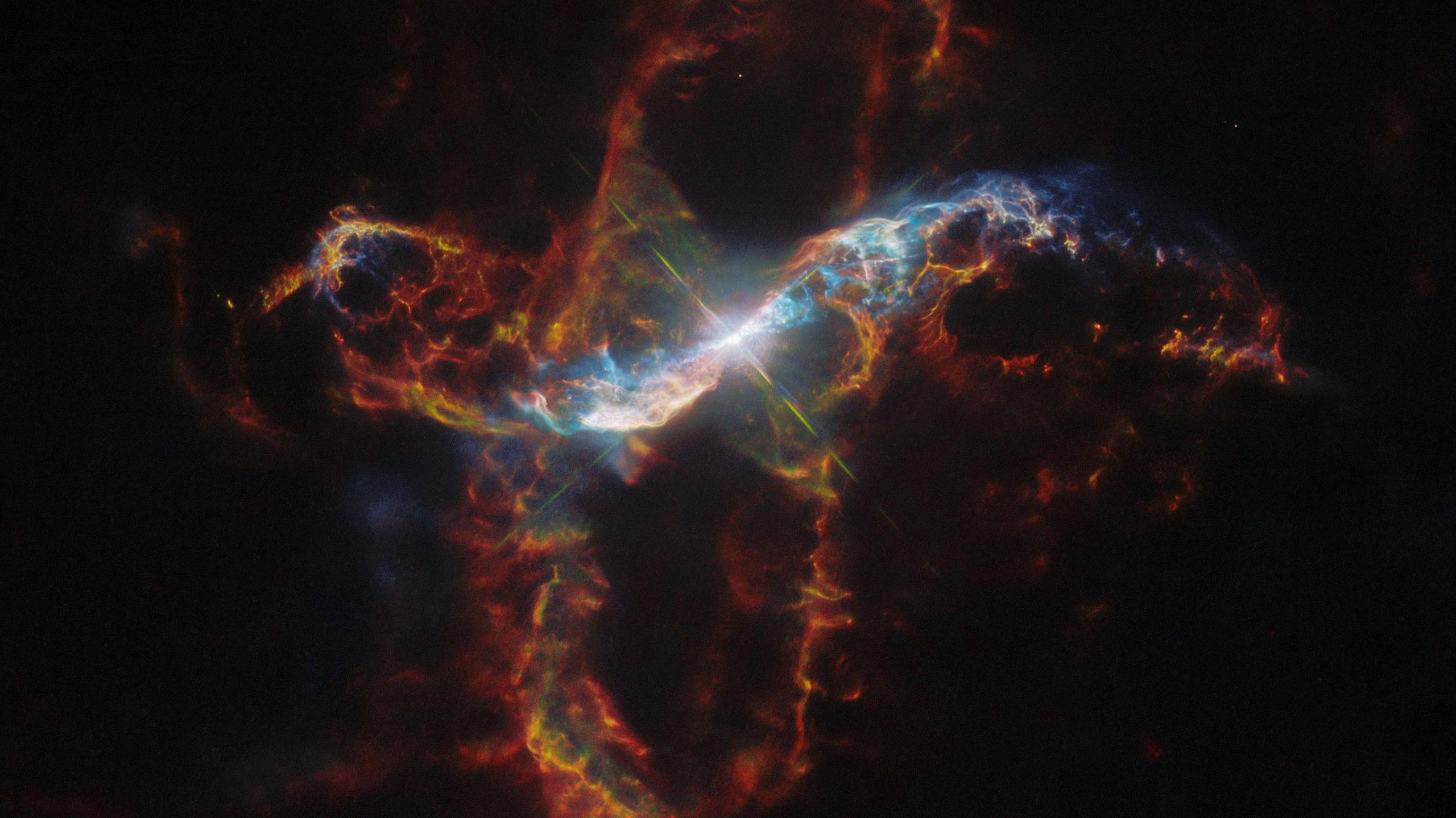Nasa telescope spots 'volcanic' star

Nasa's Hubble Space Telescope has provided a dramatic and colorful close-up of the star
- Published
Nasa's Hubble space telescope has captured an amazing view of a huge explosive star system.
The binary-star system (meaning it is made up of two stars) keeps exploding, and shooting curls and loops of colourful plasma into space.
The plasma travels at over a million miles per hour! Which astronomers say would take it from Earth to the Moon in just 15 minutes.
This explosive star system is called R Aquarii and is located around 700 light years from Earth.
More like this
- Published8 June 2023
- Published20 January 2023
- Published20 November 2022
The Hubble Space Telescope has provided astronomers with an amazing view of the star over the past 10 years
The two star system is made up of a primary star - which in this case is a red giant, and a companion star - this one is a white dwarf.
The two stars orbit each other - kind of like a dance - which is caused by gravity.
When the white dwarf comes close to the red giant in the orbit it pulls hydrogen gas from the bigger star.
This material collects on the surface of the white dwarf star and eventually causes an explosion which ejects the plasma into space.
Think of it like fireworks going off!
